Attunement
March—2025








Building upon the methods and principles of the Solarpunk movement, Attunement is a proposal. This work employs the technological practices of craft and computation towards the goals of sustainability, connectivity and interpersonal agency. It insists, by calling both forwards and backwards through time, that we have all the tools we need to create a just and verdant future.
Many of us have been lured off center by the promises of extractive modernity, but it is not too late to regroup. Slowing down, taking stock and checking in–radical acts in today’s climate– make way for action grounded in collaboration with humans and the beyond-human.
The pieces within Attunement reflect upon life in a warming world, pointing at things that have been hidden or forgotten and call, gently and urgently, for a renewed attention to where in which we stand.
Featured in:
stop-loss, Stamps MFA Graduate Exhibition, 3/25 ︎︎︎
︎ installation
︎ algorithms
︎ solar power
Many of us have been lured off center by the promises of extractive modernity, but it is not too late to regroup. Slowing down, taking stock and checking in–radical acts in today’s climate– make way for action grounded in collaboration with humans and the beyond-human.
The pieces within Attunement reflect upon life in a warming world, pointing at things that have been hidden or forgotten and call, gently and urgently, for a renewed attention to where in which we stand.
Featured in:
stop-loss, Stamps MFA Graduate Exhibition, 3/25 ︎︎︎
︎ installation
︎ algorithms
︎ solar power
Sunward
Sept—2024
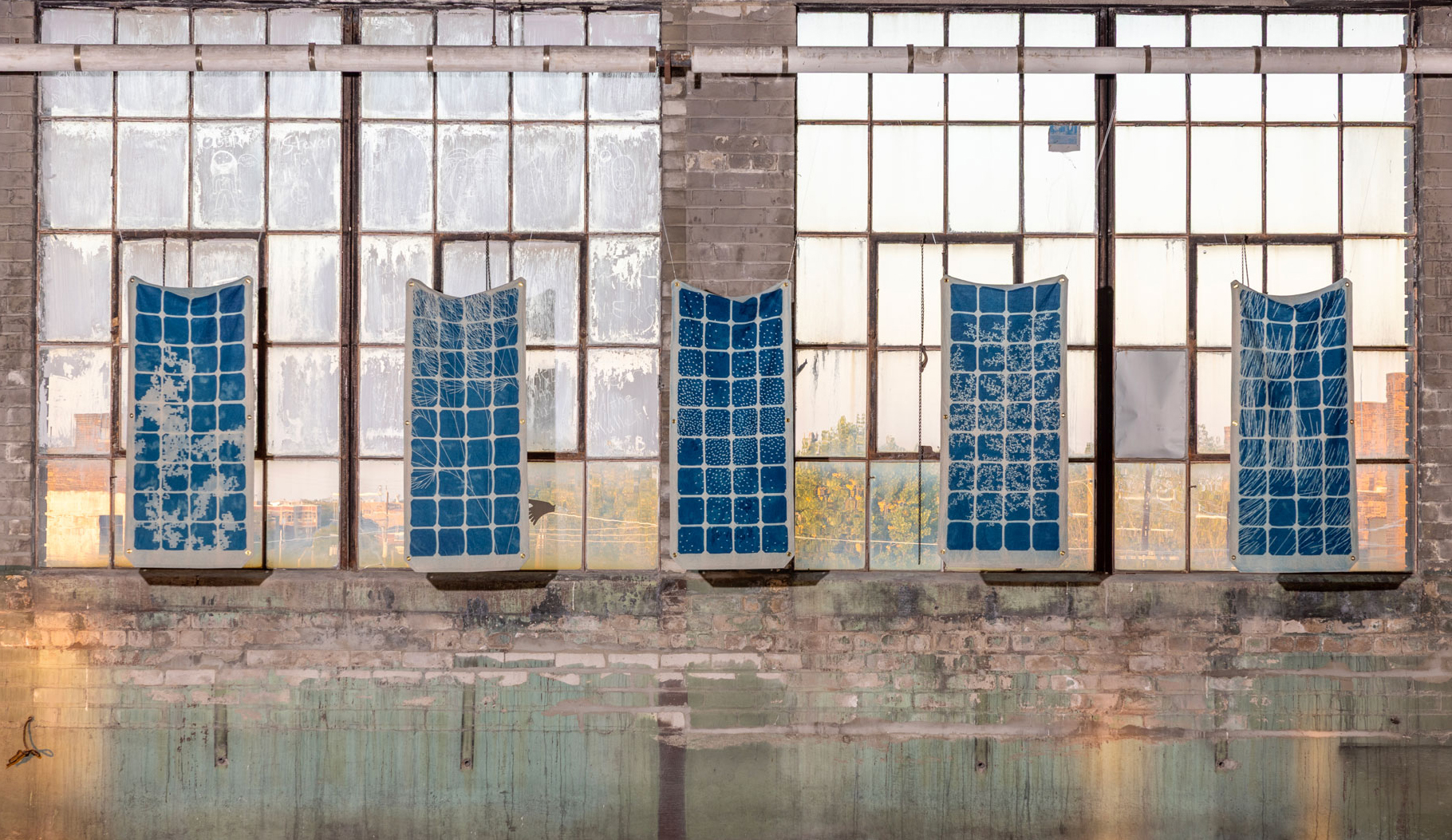


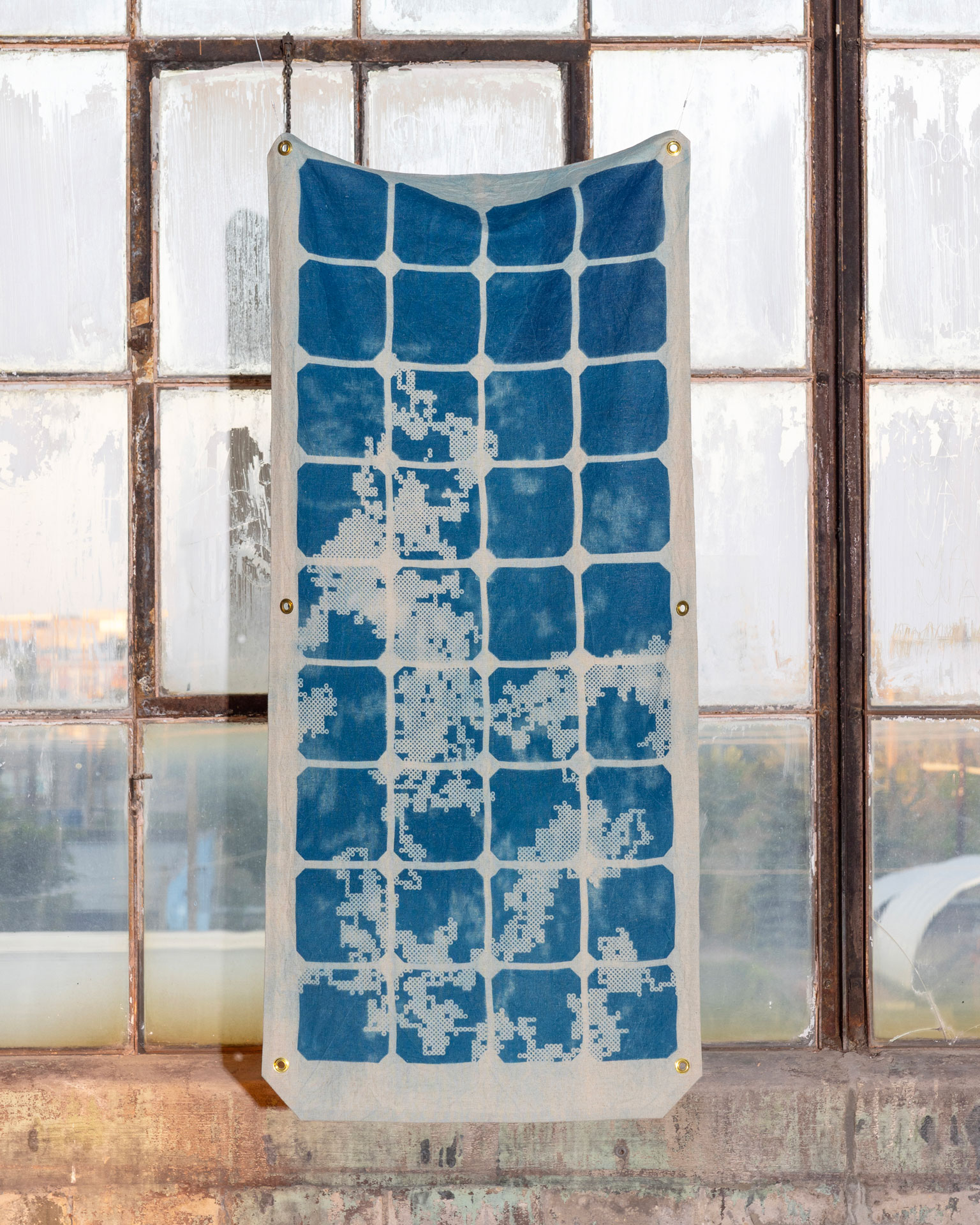
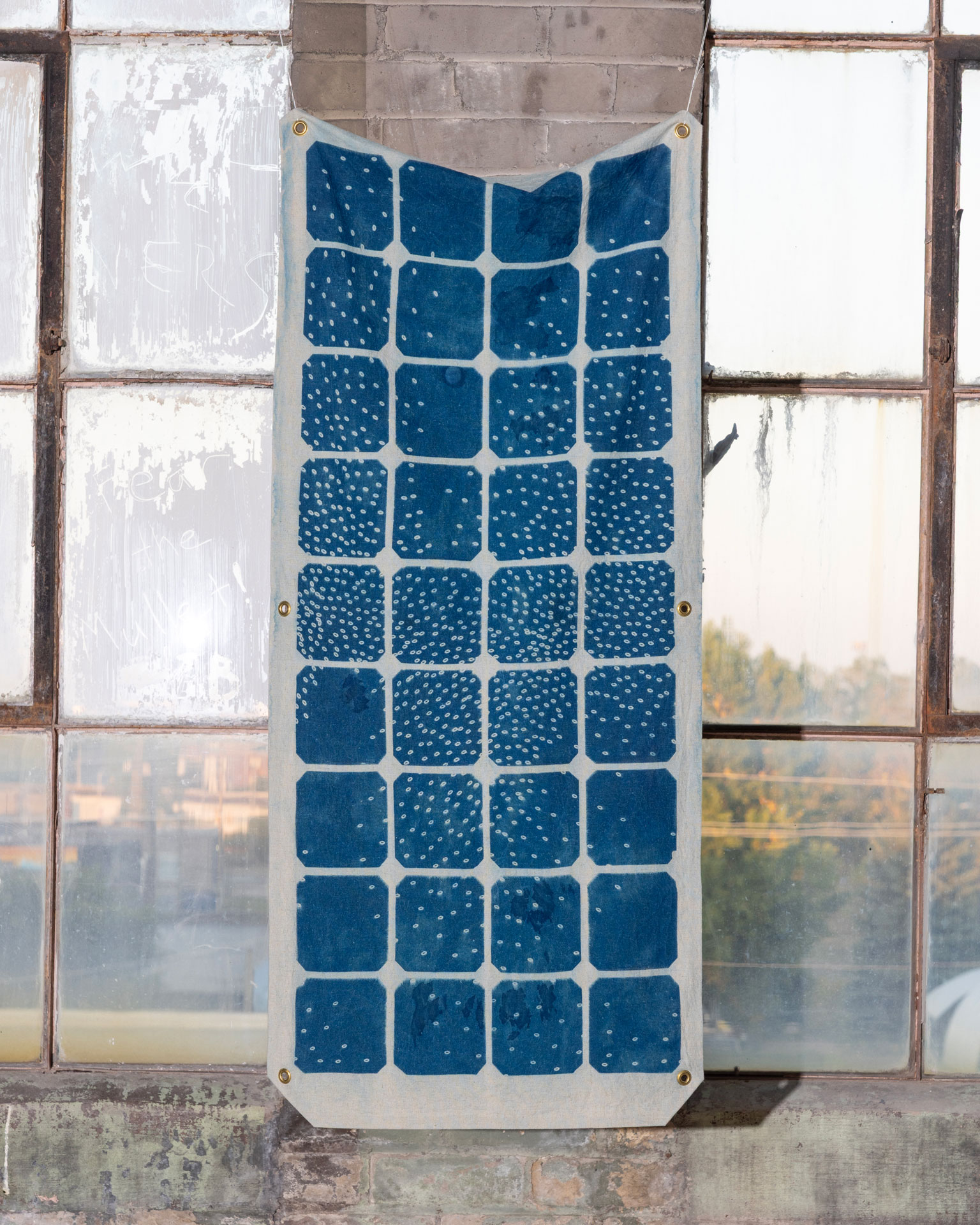
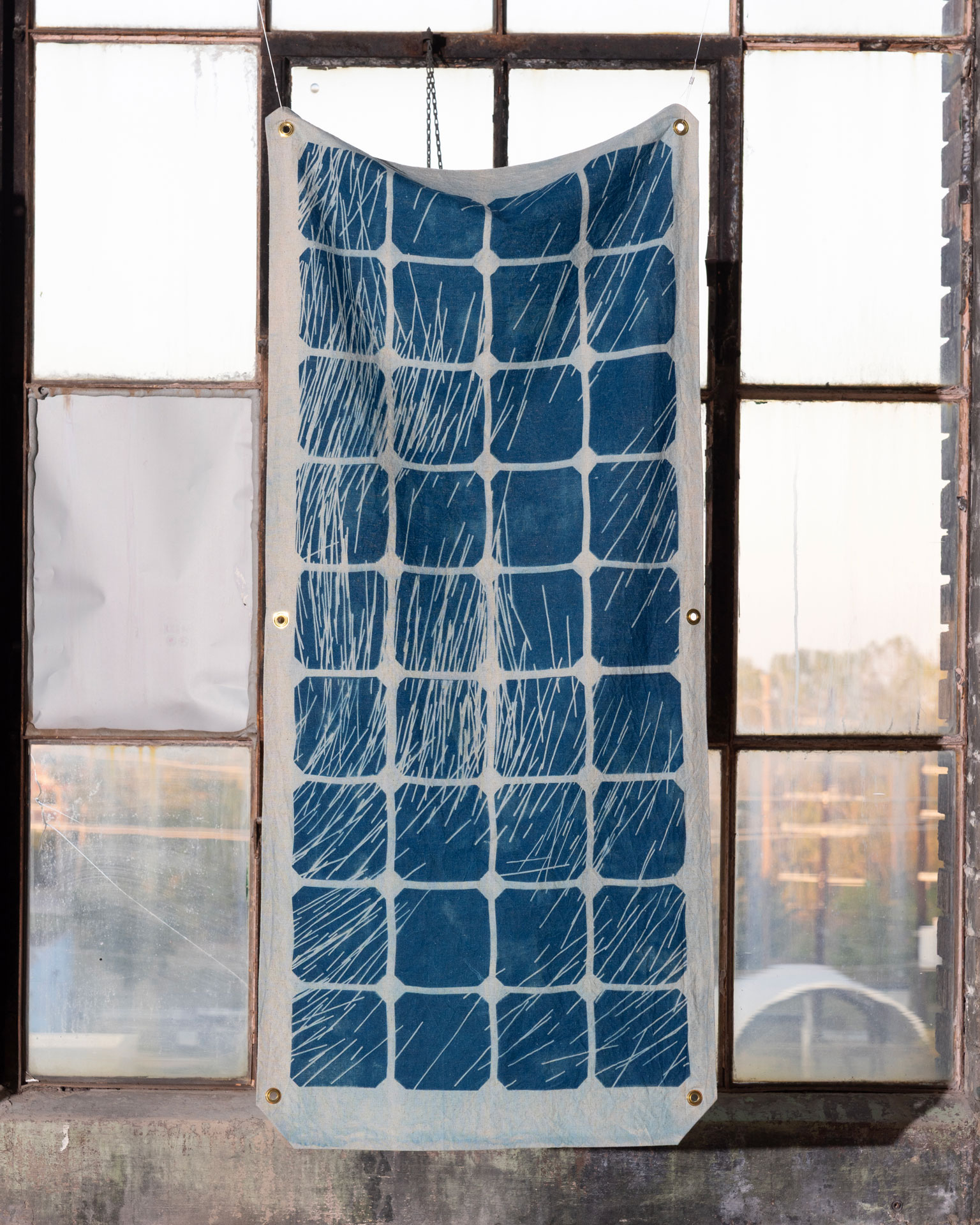

The five prints of Sunward were produced in collaboration with the power of the sun. Graphics were printed on transparencies using power from a solar panel and impressed on the fabric by cyanotype solution reacting to late summer UV rays.
Through a combination of generative code and traditional printing techniques, Sunward points towards a future where humans have learned to utilize their technological knowledge to place themselves back into nature. Harkening back to cyanotype’s first use (botanical recording), Sunward places algorithms mimicking nature as something to be appreciated, for both their beauty and usefulness as we attune ourselves, once again, to the natural world.
Featured in:
Detroit Warehouse Art & Design Fair, Art Clvb, 9/25 ︎︎︎
Environments & Microclimates, a Fiber Club* group exhibition, 9/24 ︎︎︎
︎ cyanotype
︎ algorithms
︎ solar power
Through a combination of generative code and traditional printing techniques, Sunward points towards a future where humans have learned to utilize their technological knowledge to place themselves back into nature. Harkening back to cyanotype’s first use (botanical recording), Sunward places algorithms mimicking nature as something to be appreciated, for both their beauty and usefulness as we attune ourselves, once again, to the natural world.
Featured in:
Detroit Warehouse Art & Design Fair, Art Clvb, 9/25 ︎︎︎
Environments & Microclimates, a Fiber Club* group exhibition, 9/24 ︎︎︎
︎ cyanotype
︎ algorithms
︎ solar power
Desire Lines
April—2024

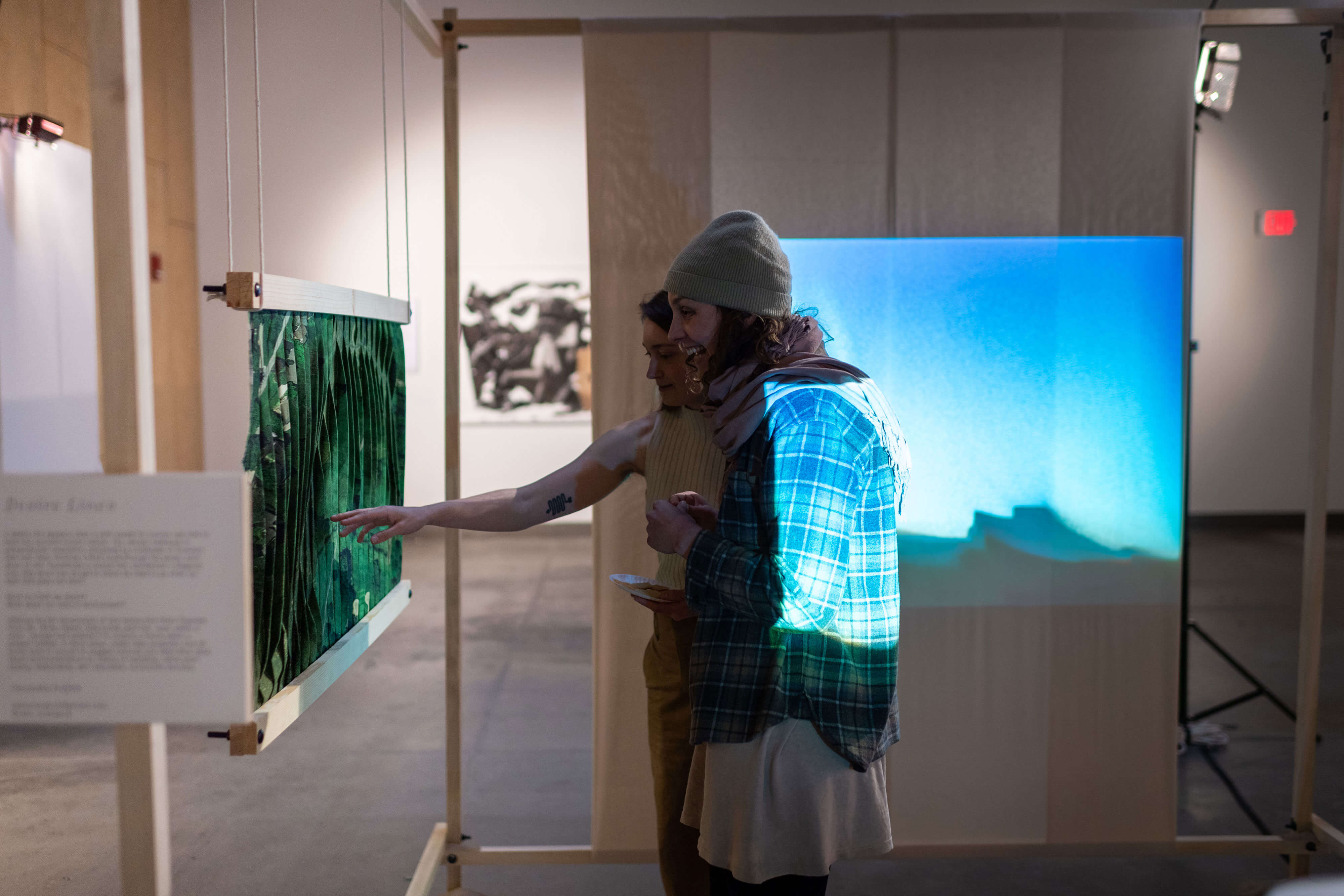



A desire line appears when a path paved for human use fails to take into account human nature. Two cement walkways in perpendicular orientation connected by multitudes of (human) feet over time, forming a third route through the grass, worn down to dirt. Sometimes a curved trail, sometimes a diagonal one, they show how we get to where we need to go when our best laid plans fall short.
Utilizing the DIY structure(s) of Ken Isaacs and Victor Papanek from the 1970s, Desire Lines builds upon the ‘room within a room’ concept and extends it to conjure a future within a present instead. A fabric piece, coded video projection and 3D prints work in concert to suggest nuanced and alternative ideas about environmentalism by means of rewilding, native plant sowing, stewardship, self-education, community and play.
Featured in:
Anedged: 2024 MFA First Year Exhibition ︎︎︎
︎ installation
︎ solarpunk
︎ computation
︎ fiber
Utilizing the DIY structure(s) of Ken Isaacs and Victor Papanek from the 1970s, Desire Lines builds upon the ‘room within a room’ concept and extends it to conjure a future within a present instead. A fabric piece, coded video projection and 3D prints work in concert to suggest nuanced and alternative ideas about environmentalism by means of rewilding, native plant sowing, stewardship, self-education, community and play.
Featured in:
Anedged: 2024 MFA First Year Exhibition ︎︎︎
︎ installation
︎ solarpunk
︎ computation
︎ fiber
Floating selvedges, circumsolar orbit. Galileo knew something about my dad and me.
Sept—2023



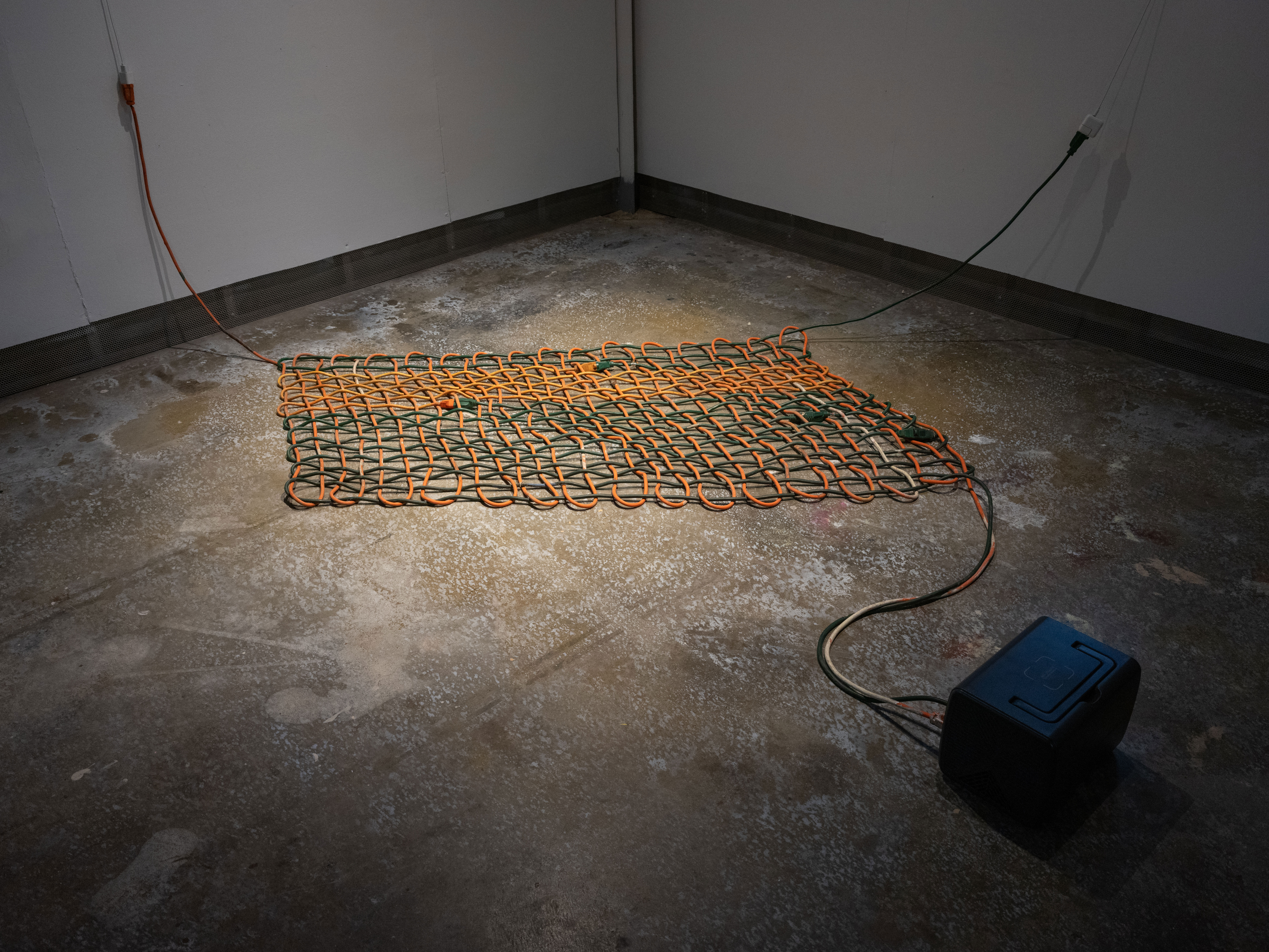
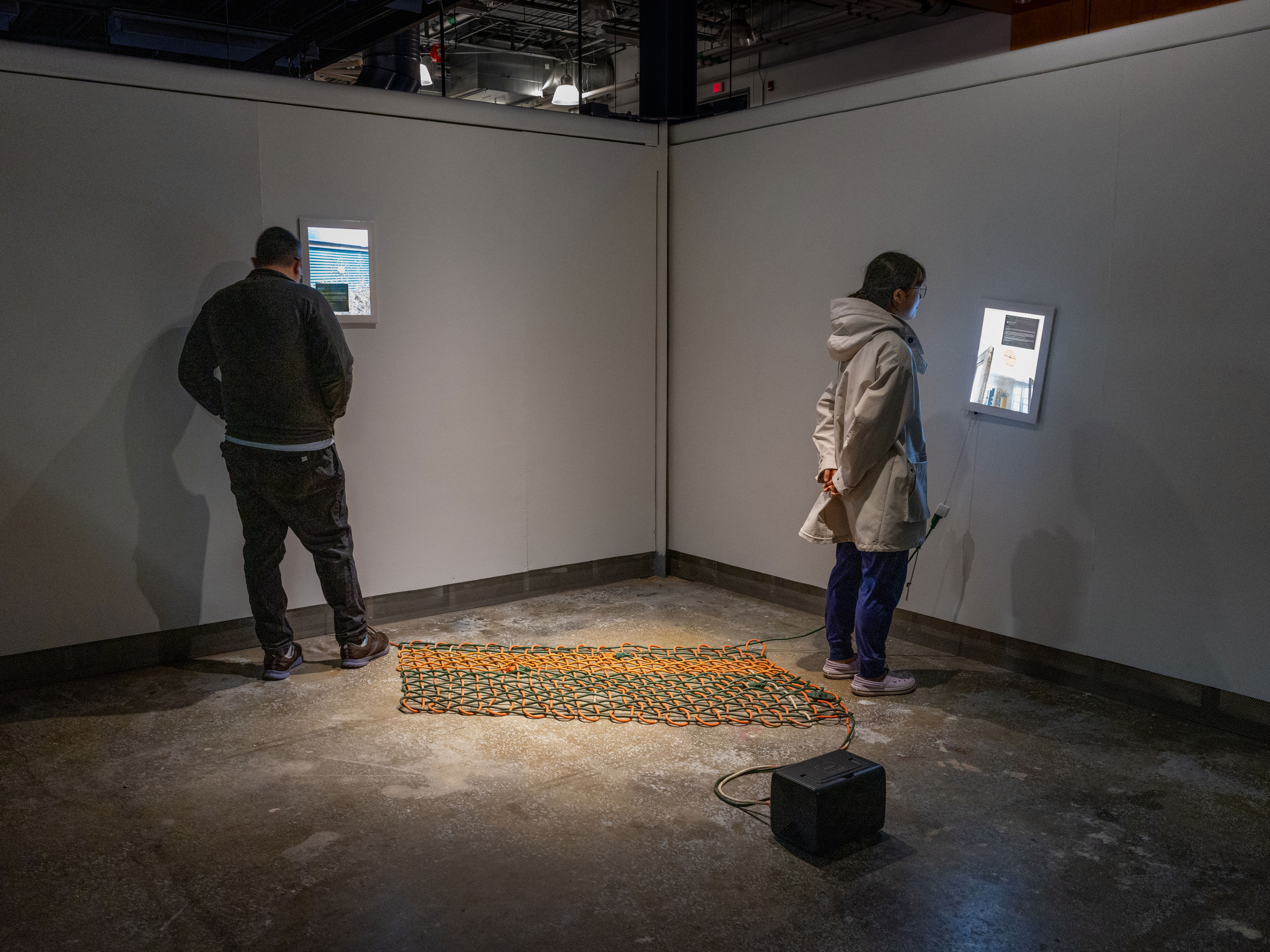
Floating selvedges, circumsolar orbit. Galileo knew something about my dad and me offers a cultural exploration of strategies for addressing climate change, centering on domestic implementation of solar energy. Inspired by a personal exchange between myself and my father, Floating Selvedges interlaces textual elements and woven connections to construct a layered narrative around familial relationships on a warming planet.
Featured in: Ecosocialism or Extinction, Swords into Ploughshares Gallery, 1/24 ︎︎︎
︎ installation
︎ solar power
︎ weaving
Featured in: Ecosocialism or Extinction, Swords into Ploughshares Gallery, 1/24 ︎︎︎
︎ installation
︎ solar power
︎ weaving
Rule 110
Aug—2023

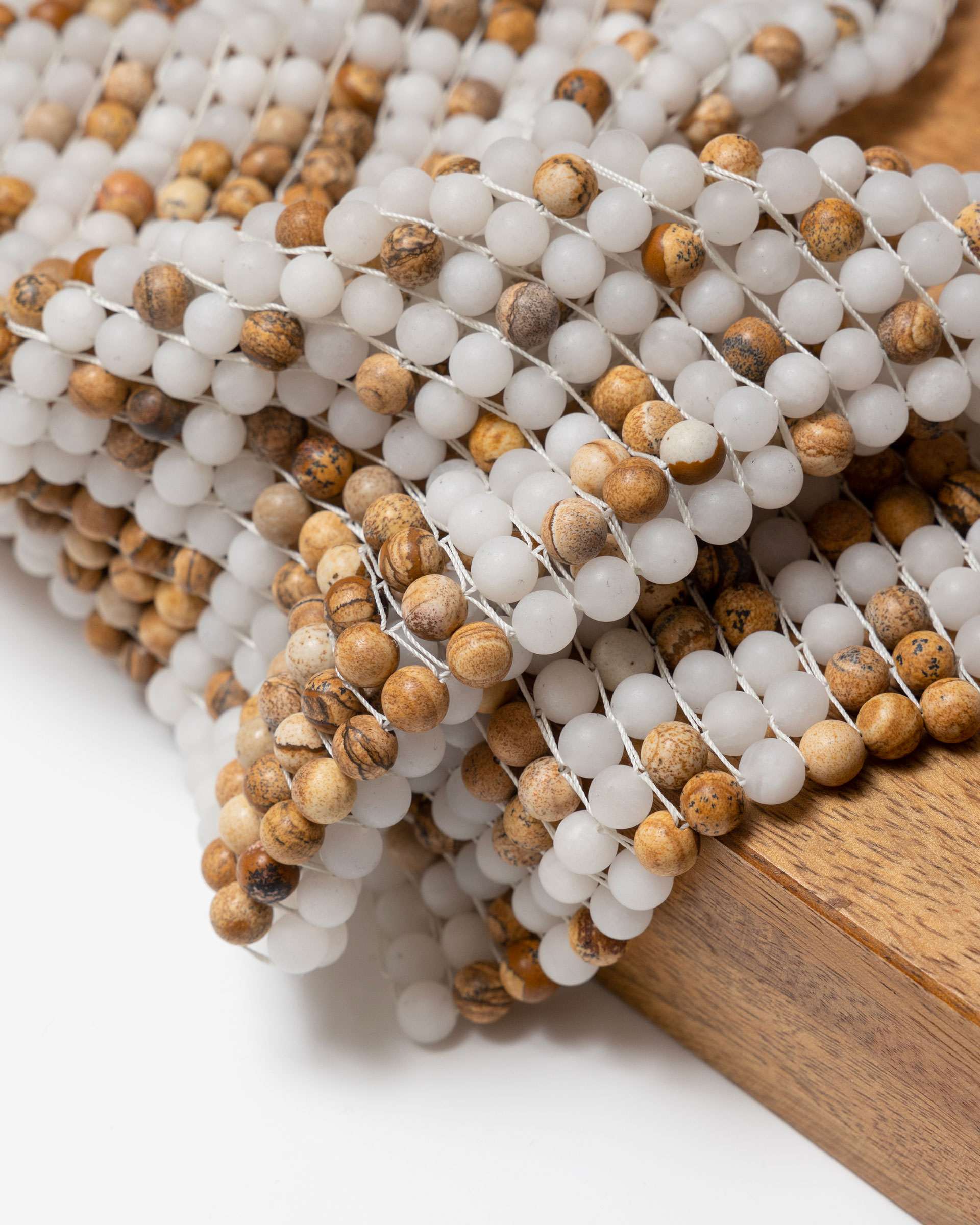
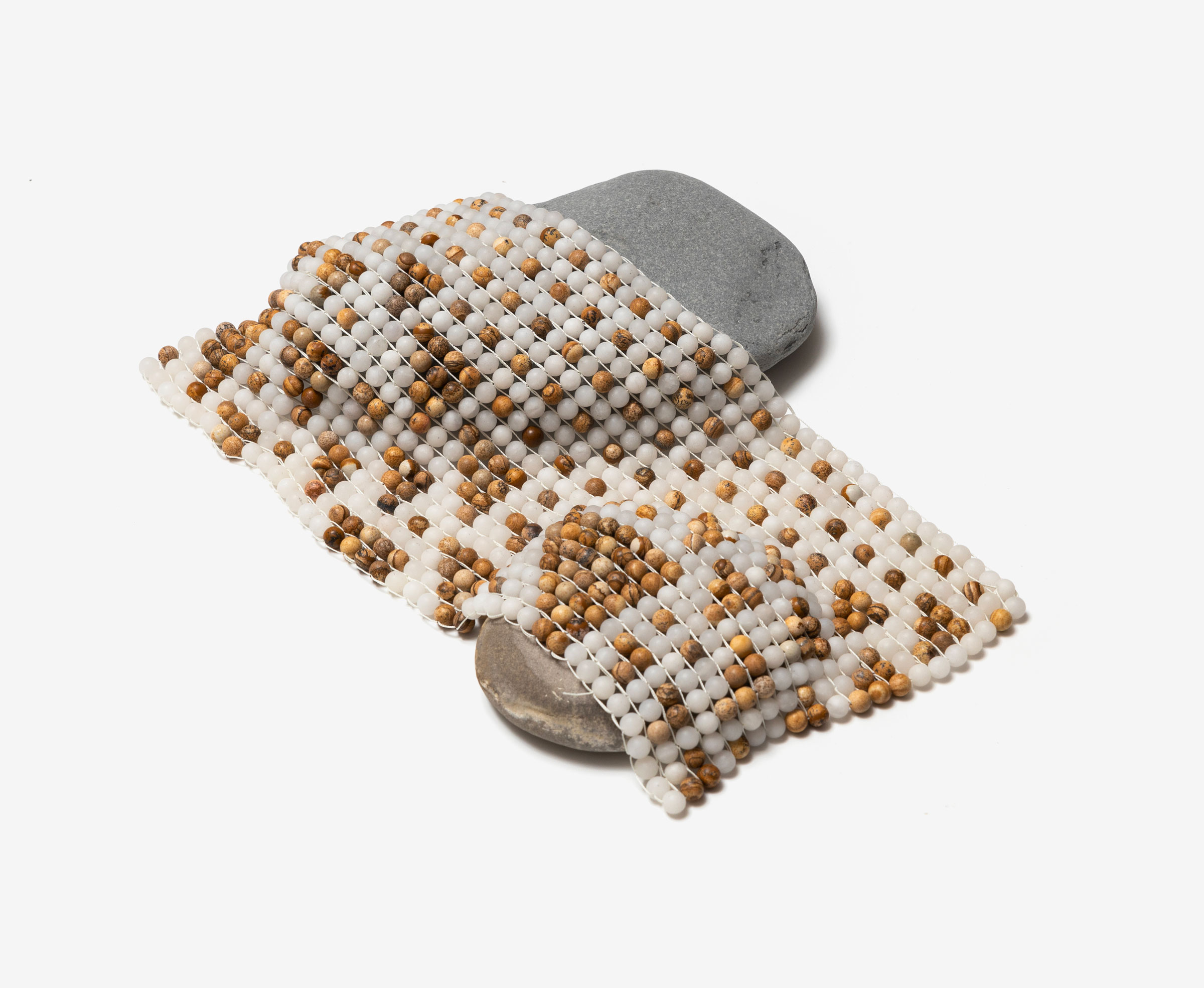

Rule 110 is a beaded art piece depicting the elementary cellular automation algorithm of the same name. Cellular automata, the algorithm on which Conway’s Game of Life is built, is significant for its ability to model a range of complex behaviors. As defined by Steven Wolfram and Matthew Cook, rule 110 is unique among cellular automata due to its proven universality and Turing completeness. Depicted here in beads of jasper and white jade, the rule enters the third dimension as a weighty fabric, connecting the worlds of scientific computation and organic elegance.
Featured in:
Best in Fiber Arts Award, University of Michigan Science as Art Competition 2/24
Mending the Net, A Fiber Club* group exhibition, 9/23 ︎︎︎
︎ beading
︎ algorithms
︎ biophilia